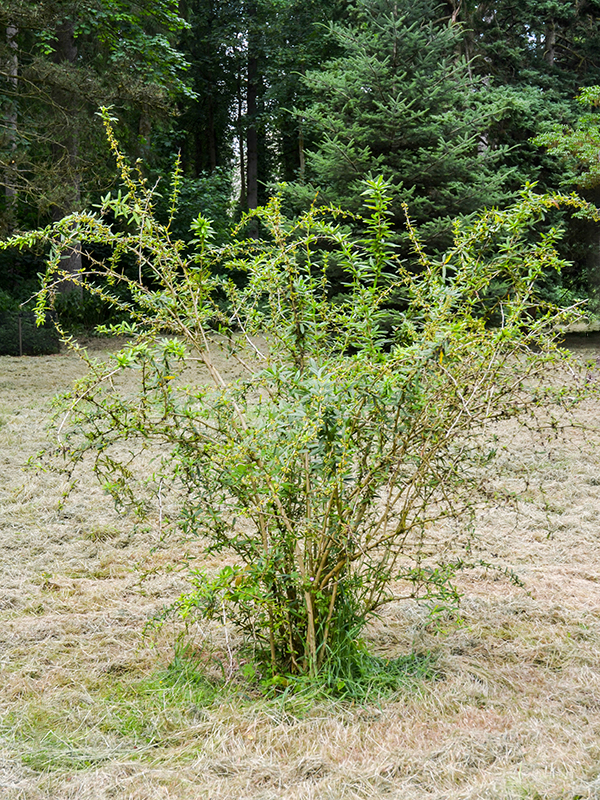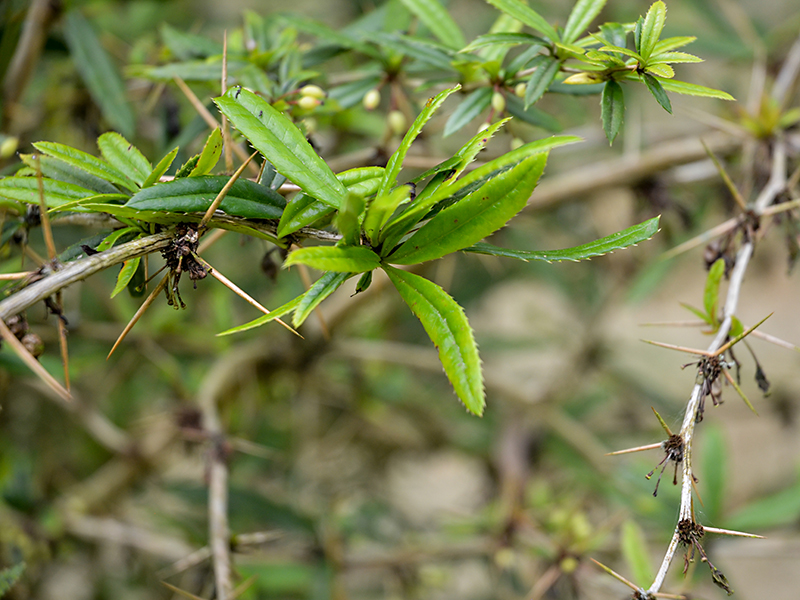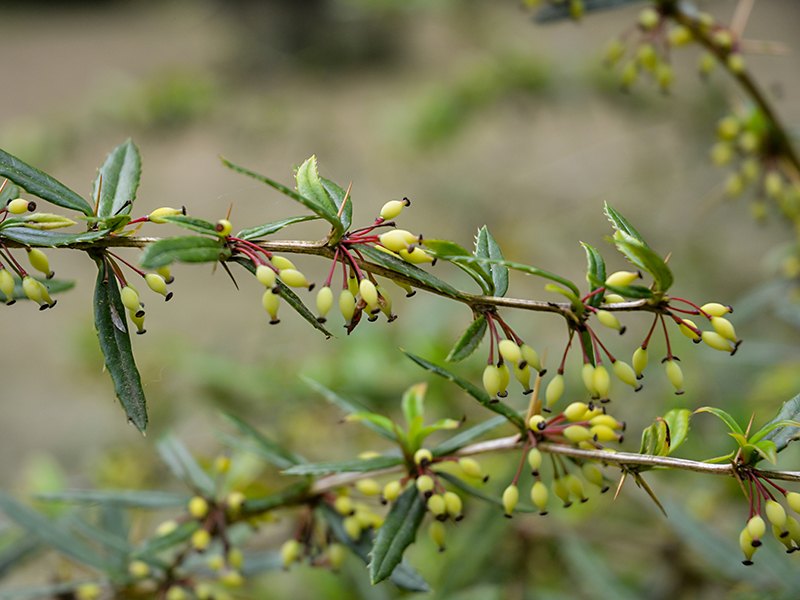| Landscape | Works well in gardens and as borders and groundcover. |
| Propagation | Propagate by seed (although offspring may be variable), or by cuttings. |
| Cultivation | Will thrive in any soil type that is not waterlogged, and should be grown in full sun. |
| Pests | The bacteria Pseudomonas berberidis may cause black spots on leaves, and the berberry aphid (Liosomaphis berberidis) may also be a problem. |
| Notable Specimens | Westonbirt, The National Arboretum, Tetbury, Gloucestershire, England. |
| Bark/Stem Description | Stems are grey and grooved, with rigid spines to 3 cm. |
| Leaf Description | Leaves are bright green above, paler beneath, rigid, growing to 8 x 1 cm. |
| Flower Description | Flowers show up to 10 per cluster. |
| Fruit Description | Fruit is ovoid with reduced style, mauve glaucous-blue. |


